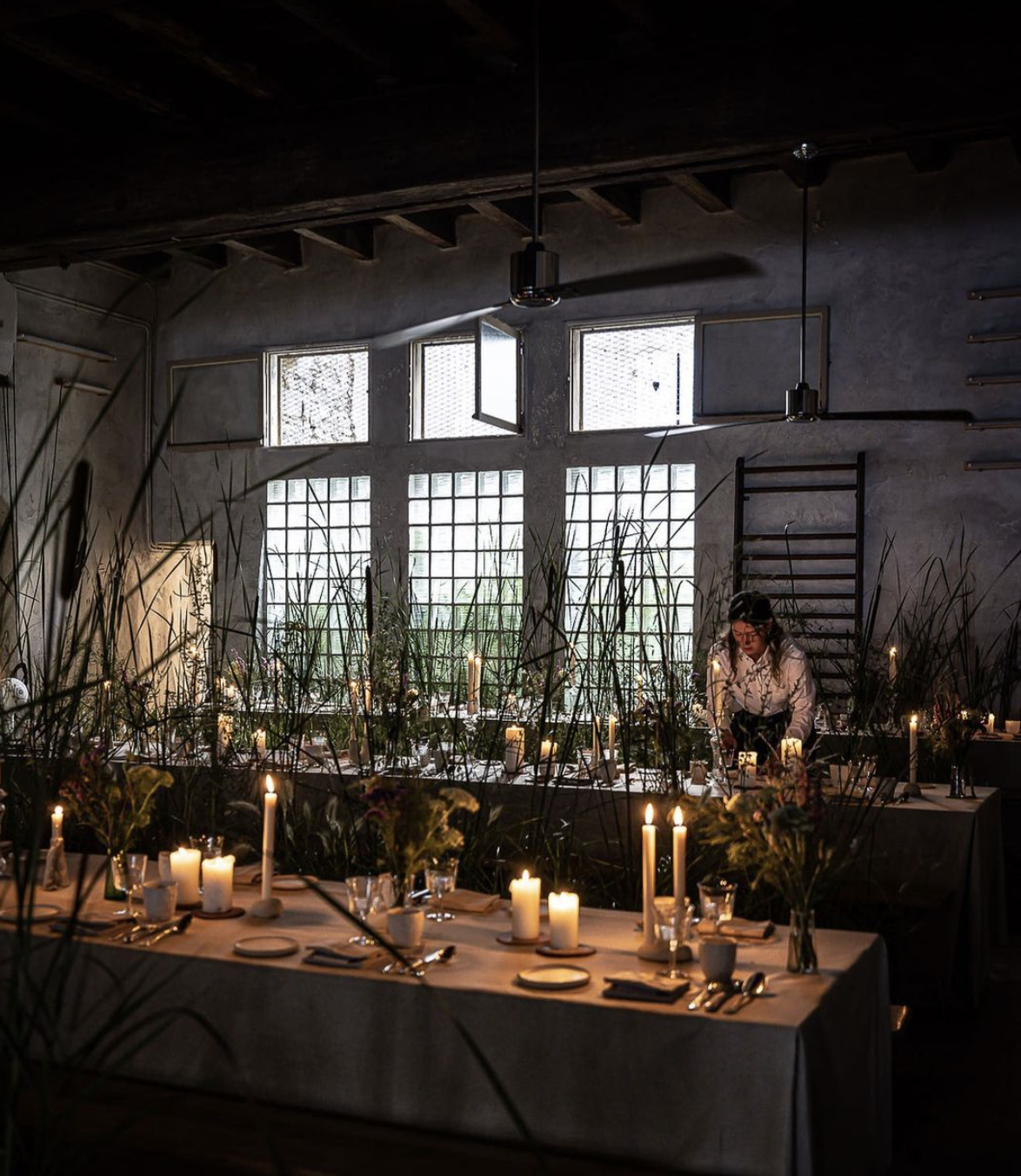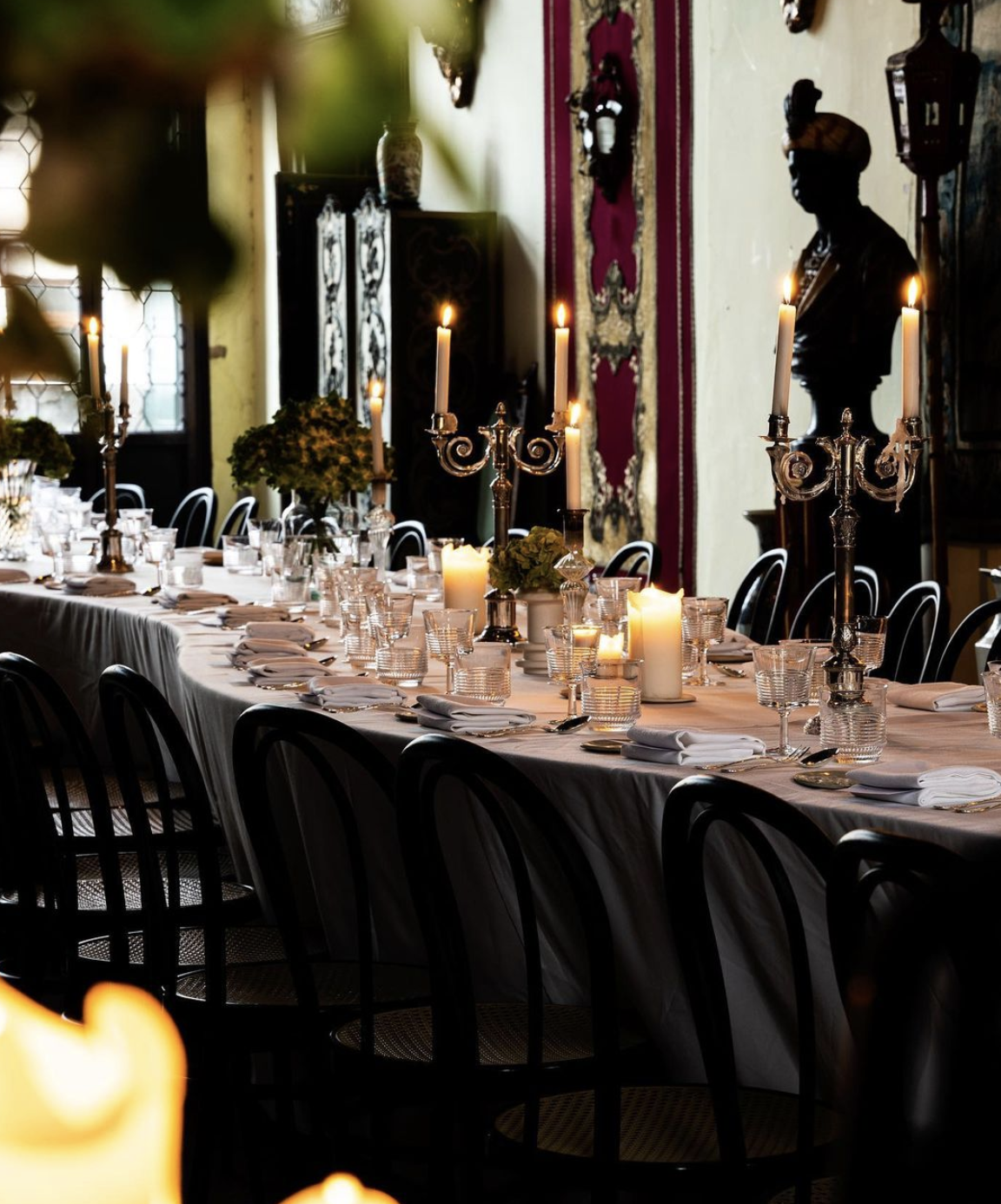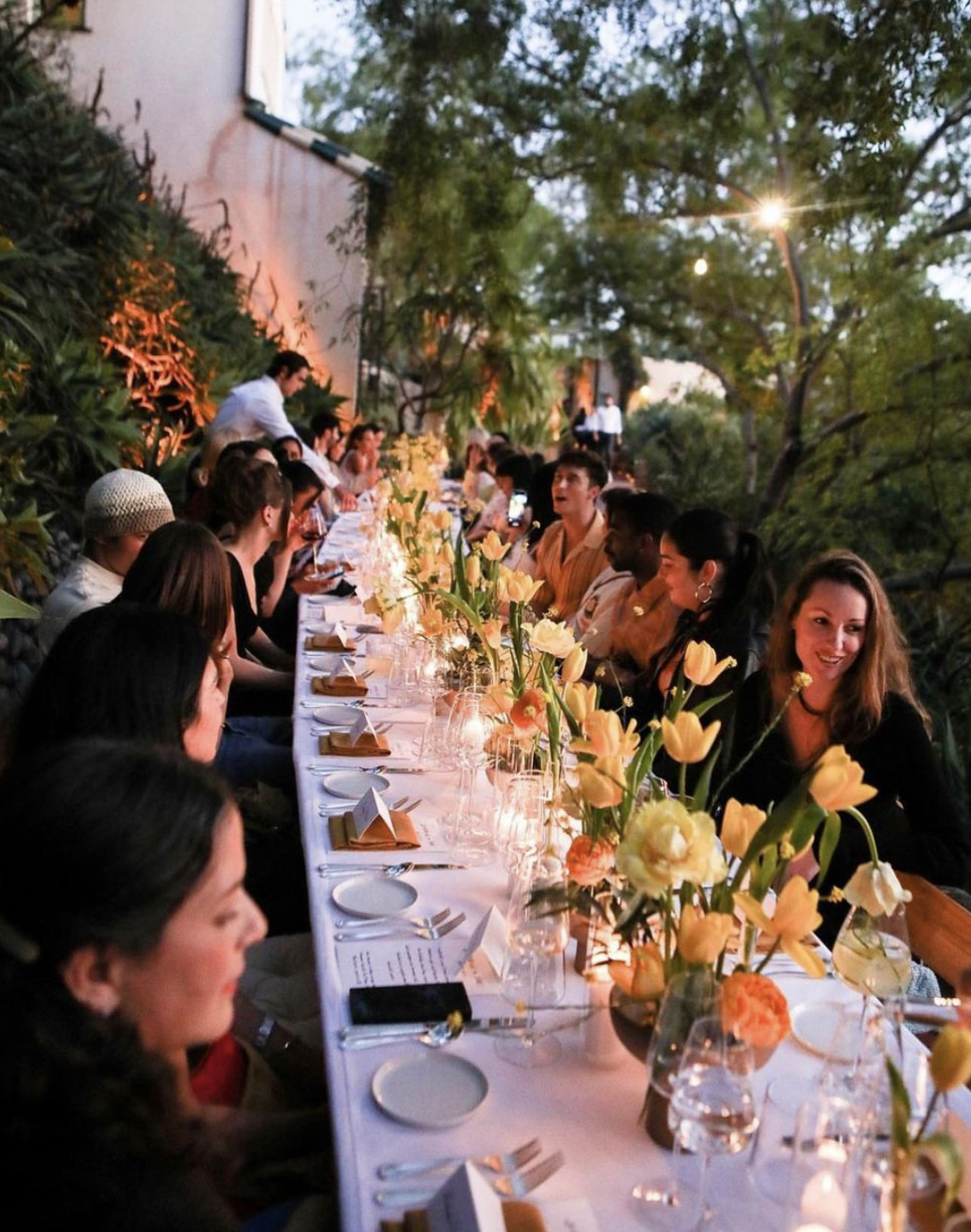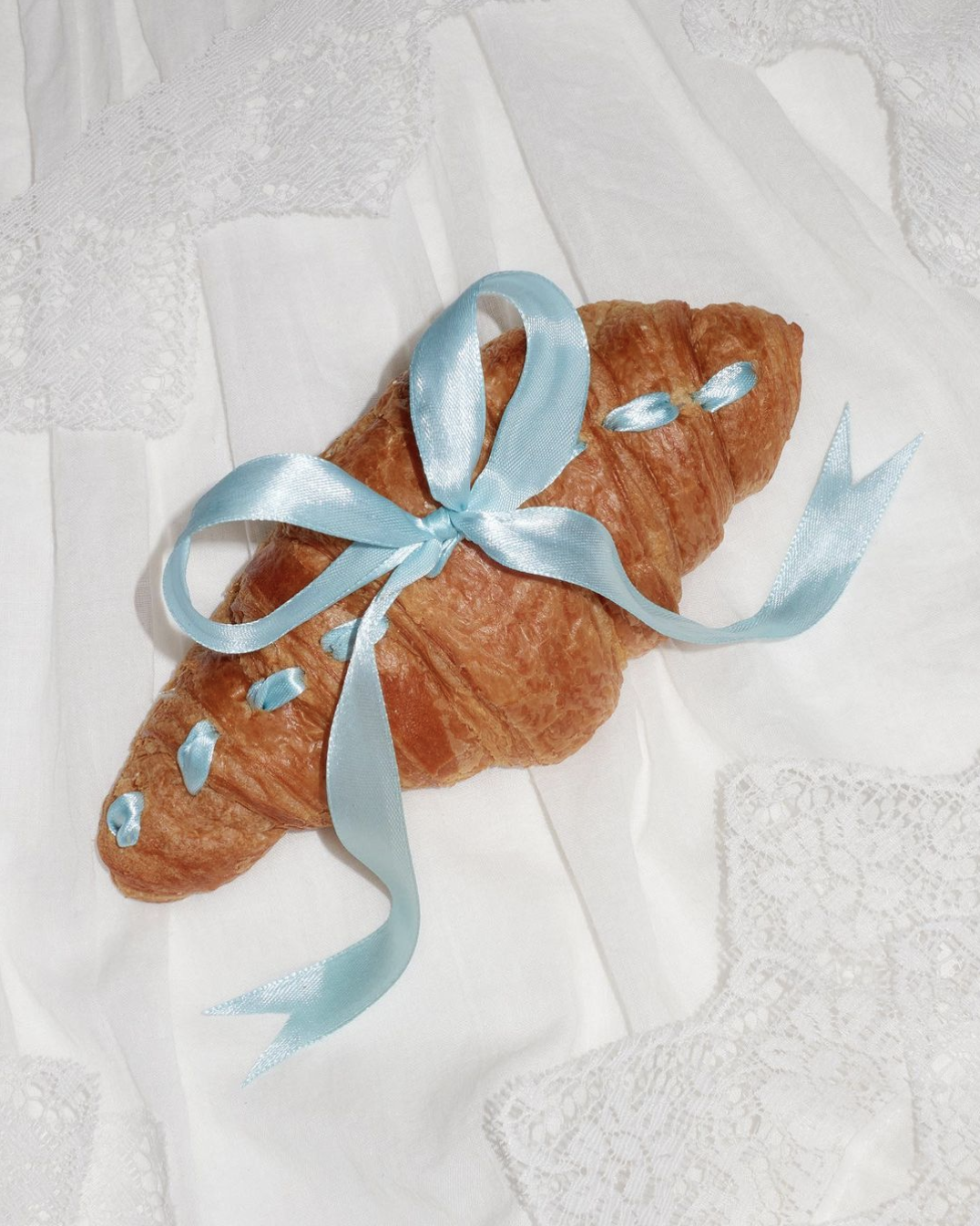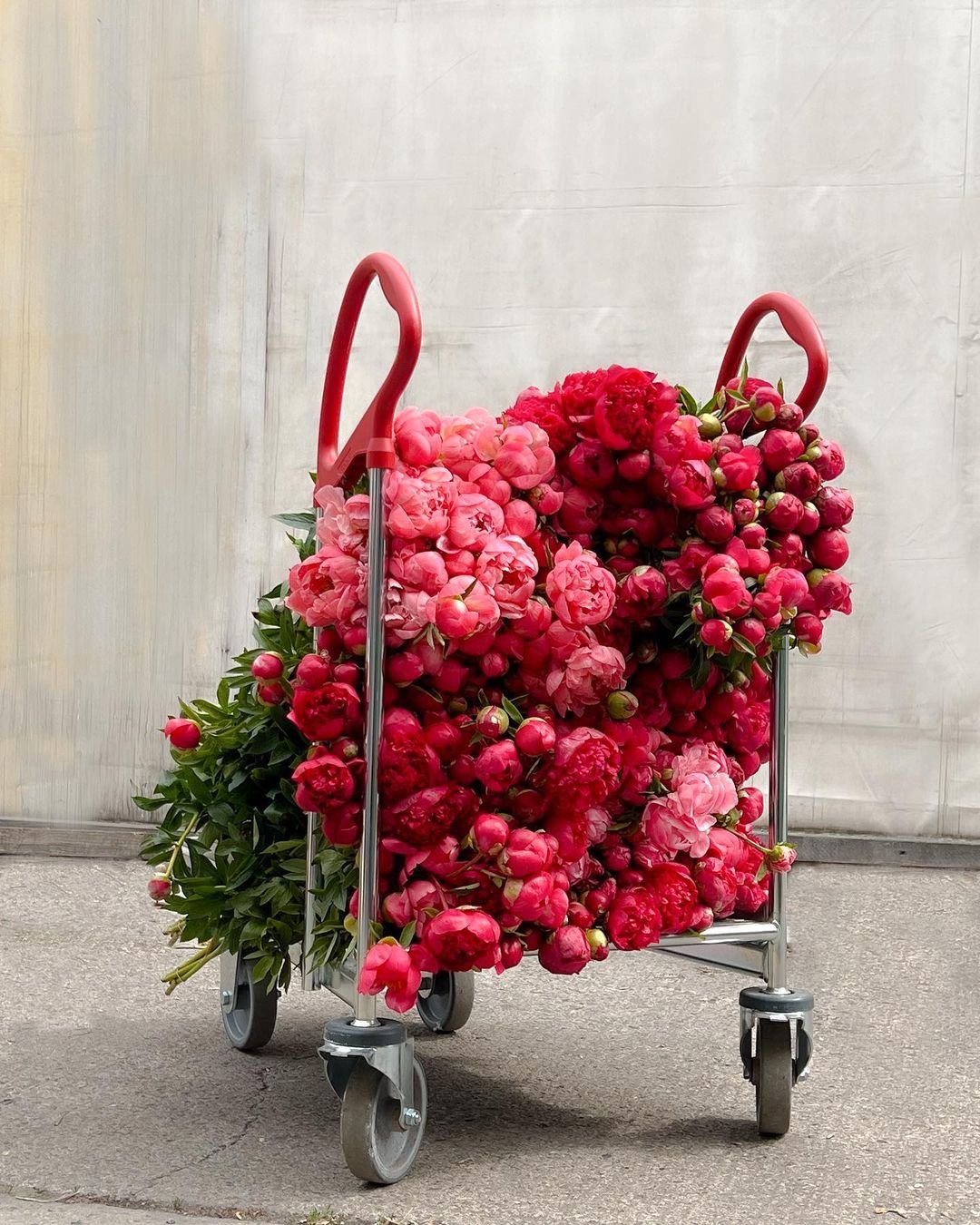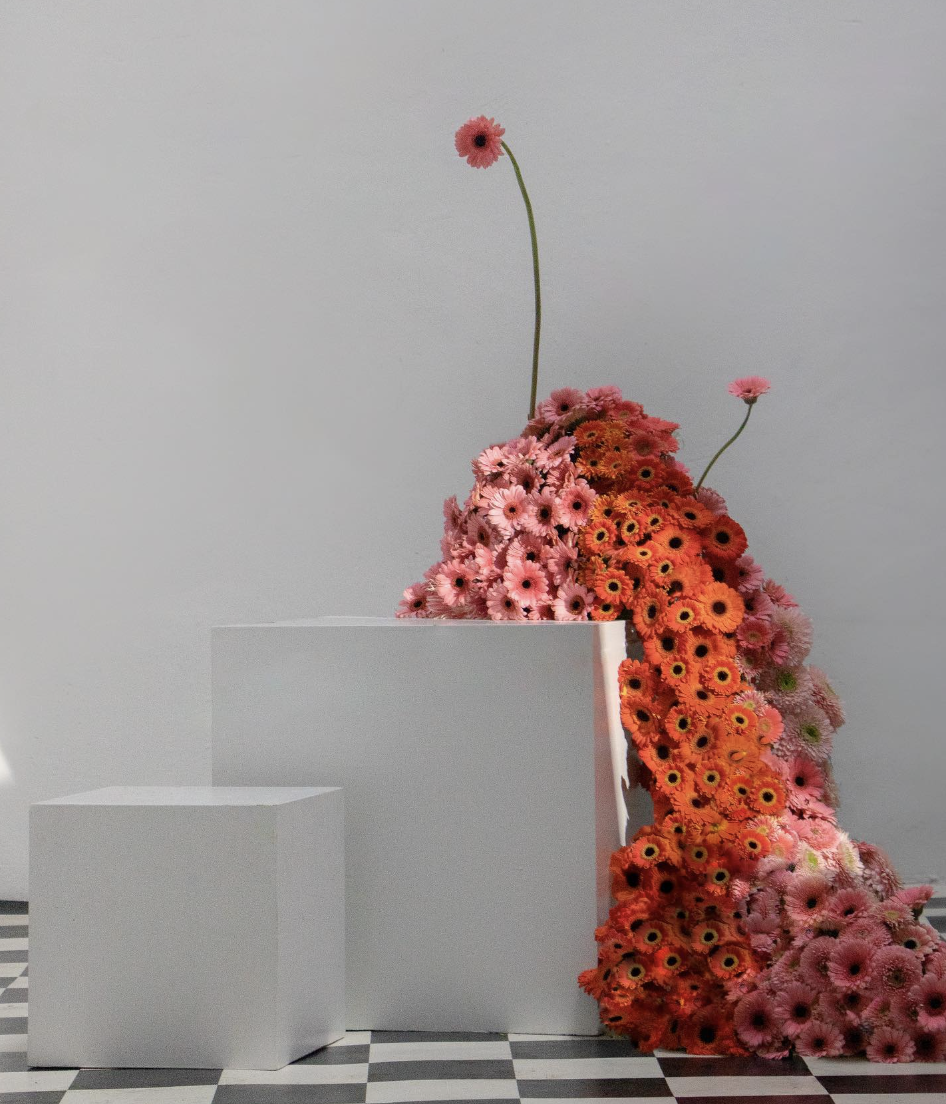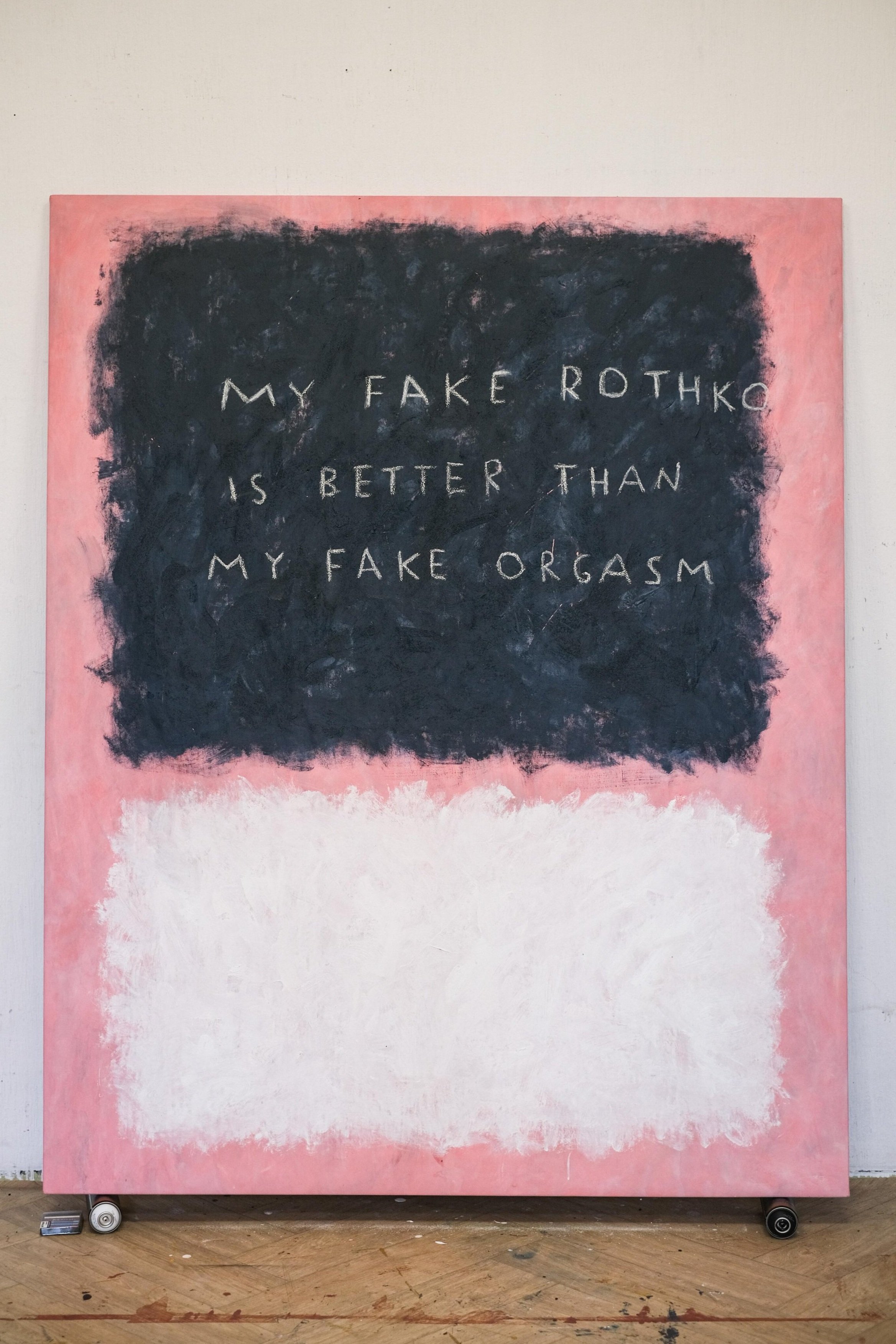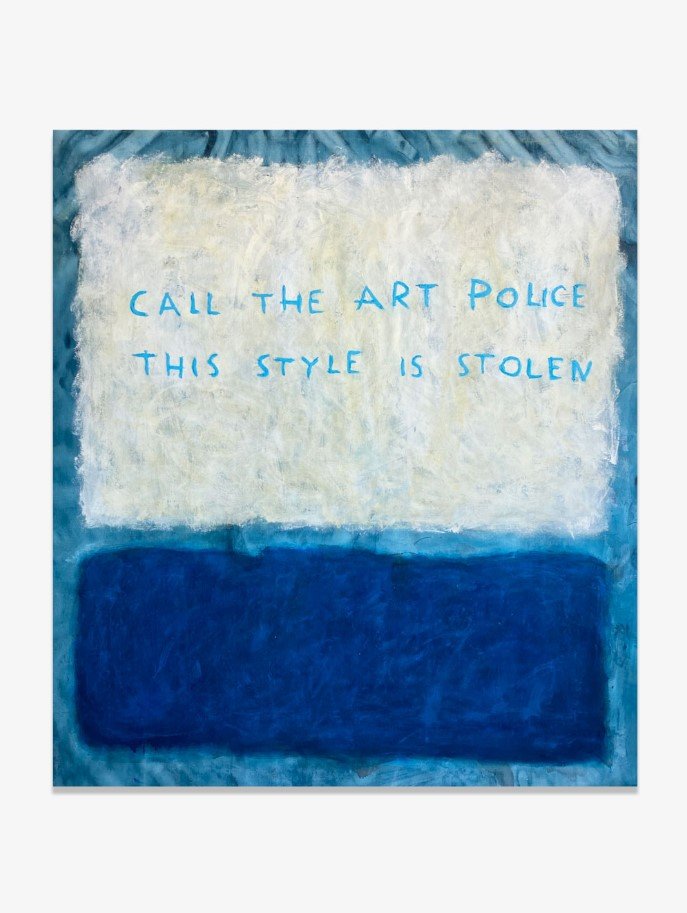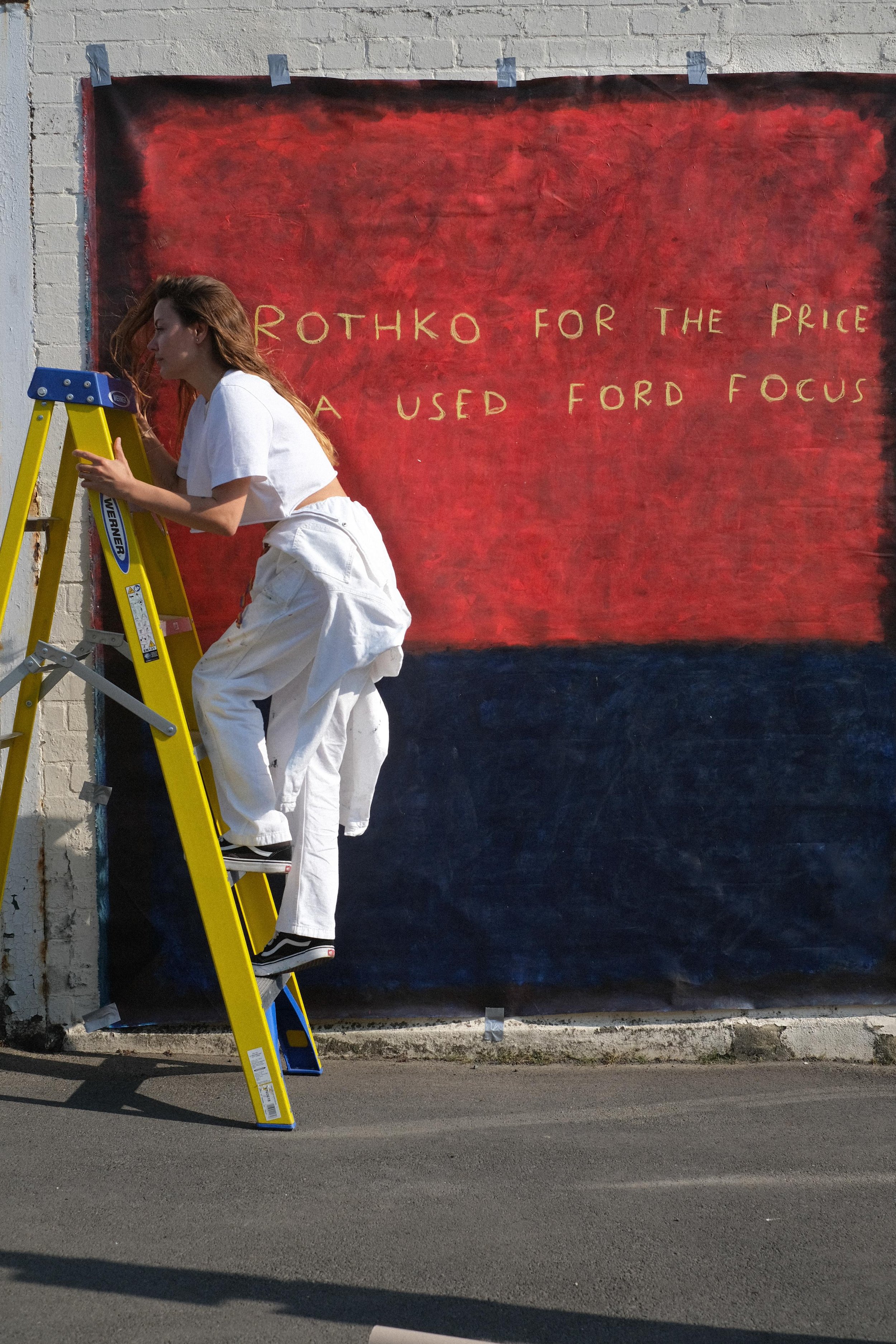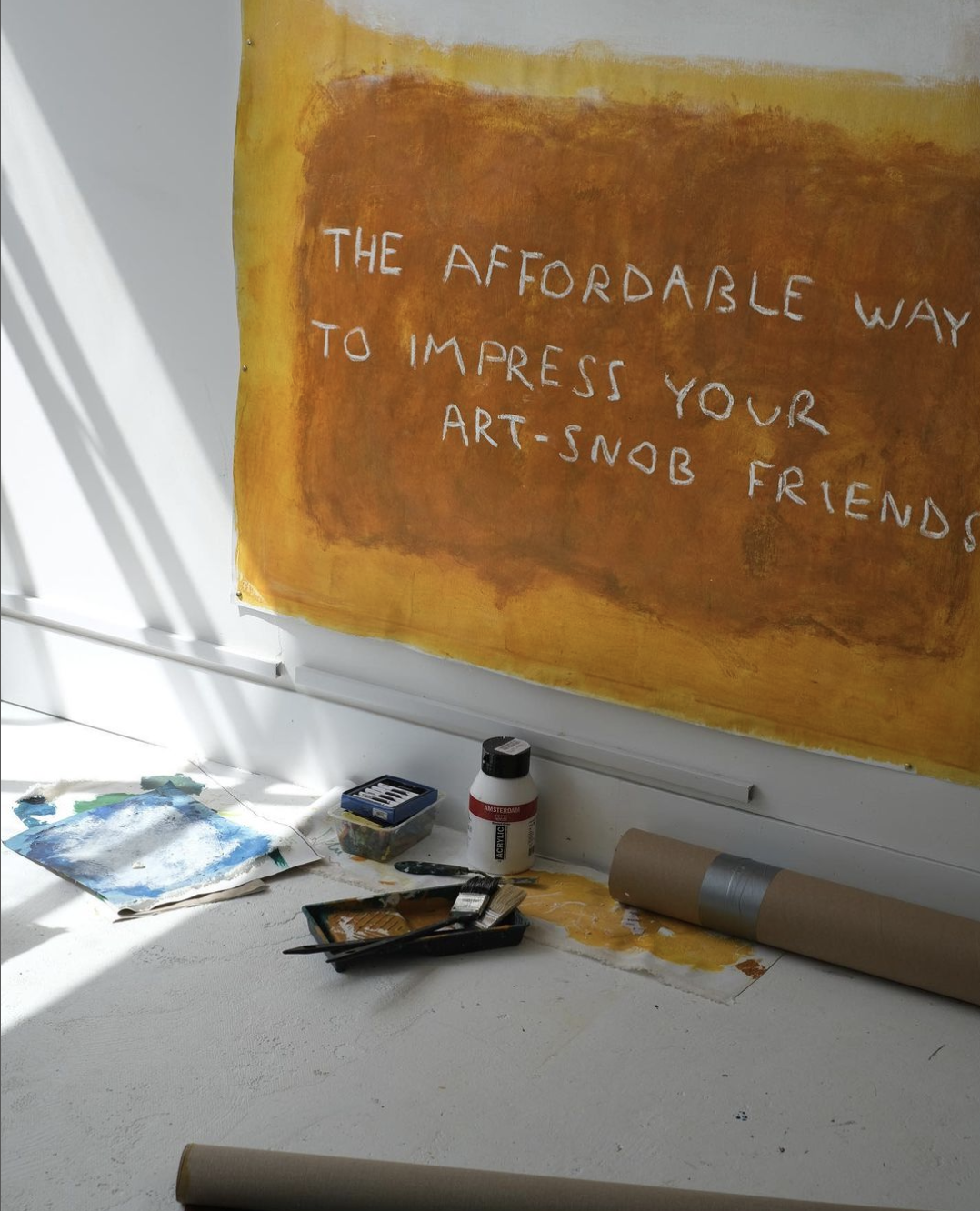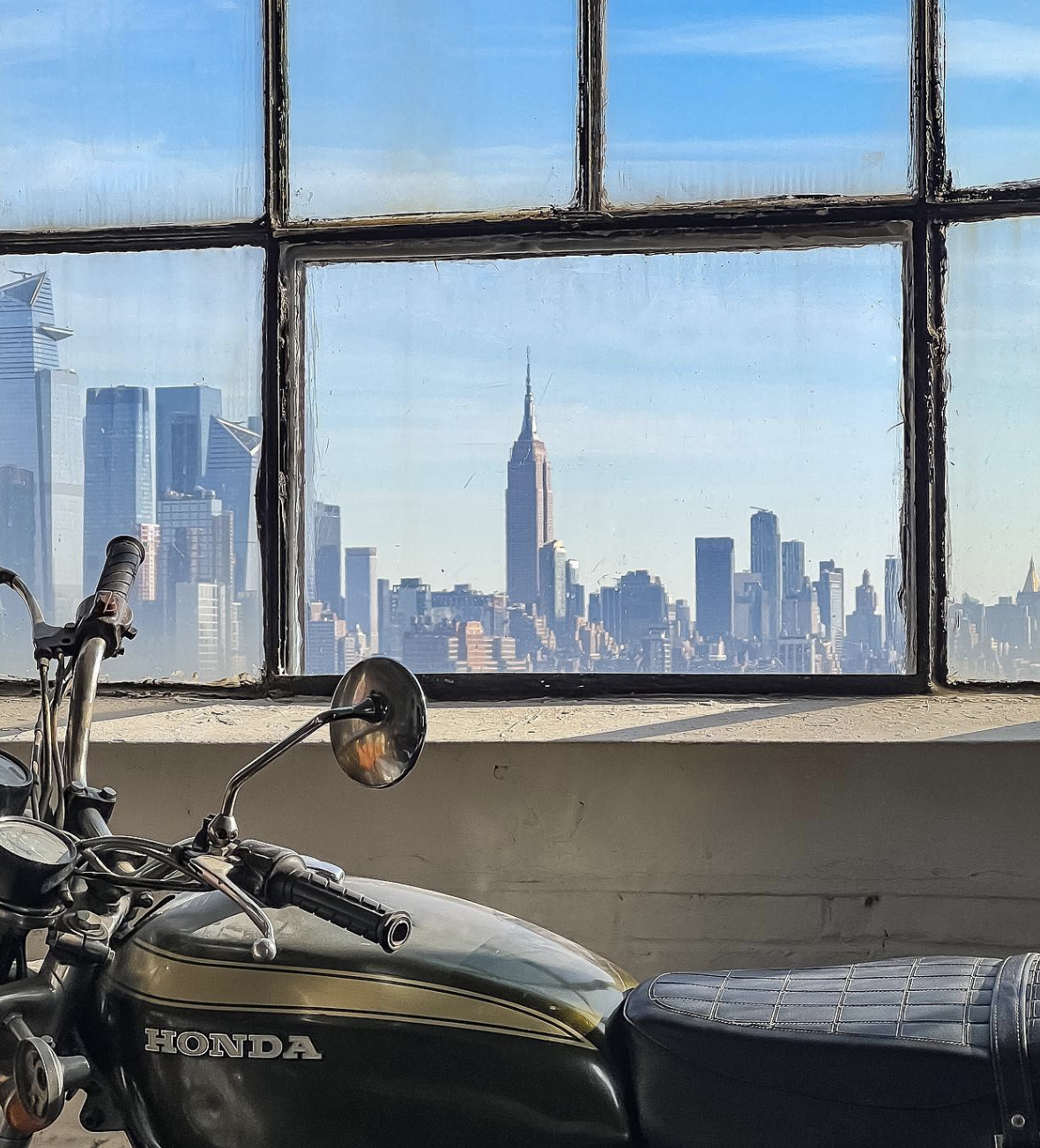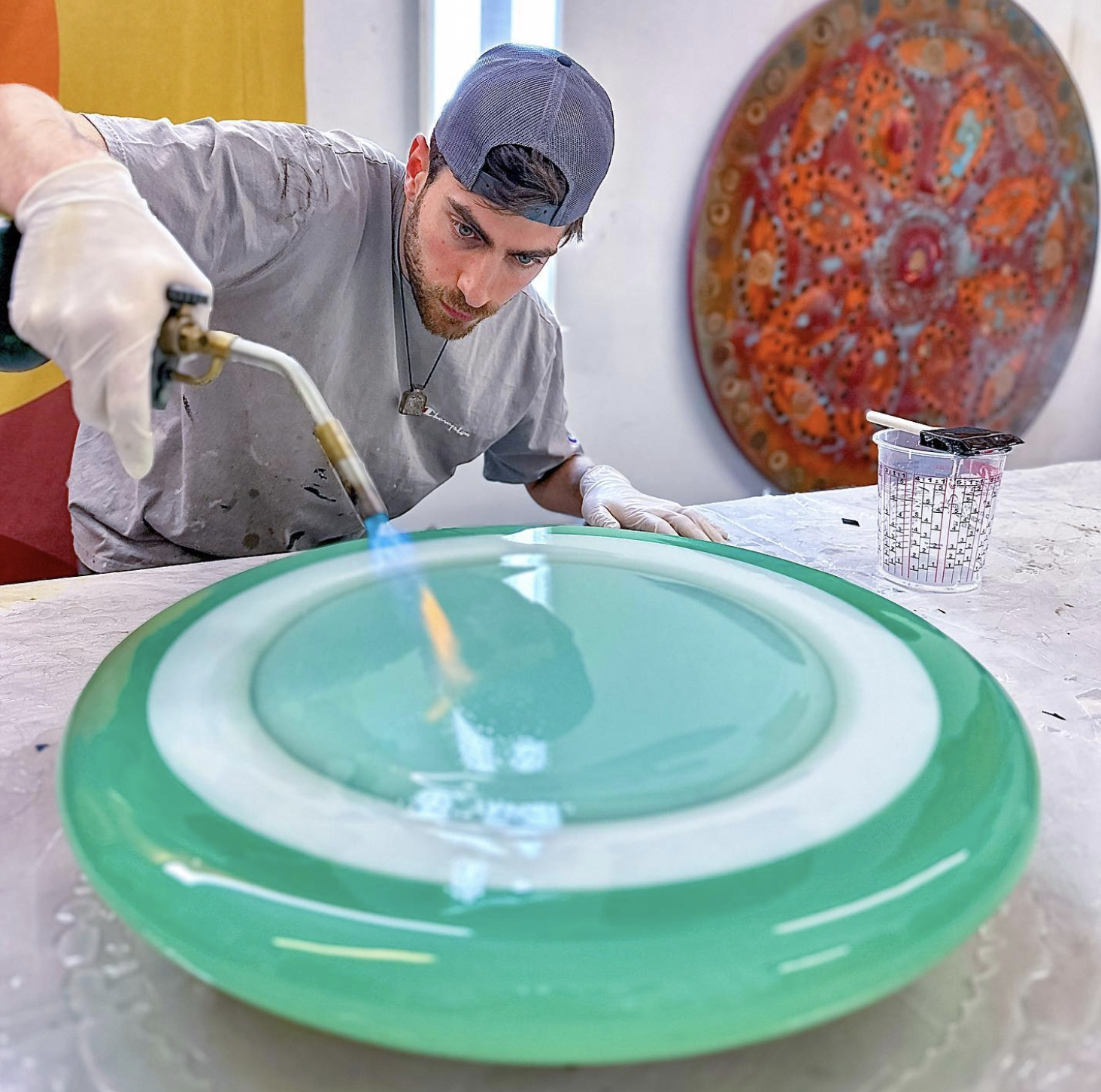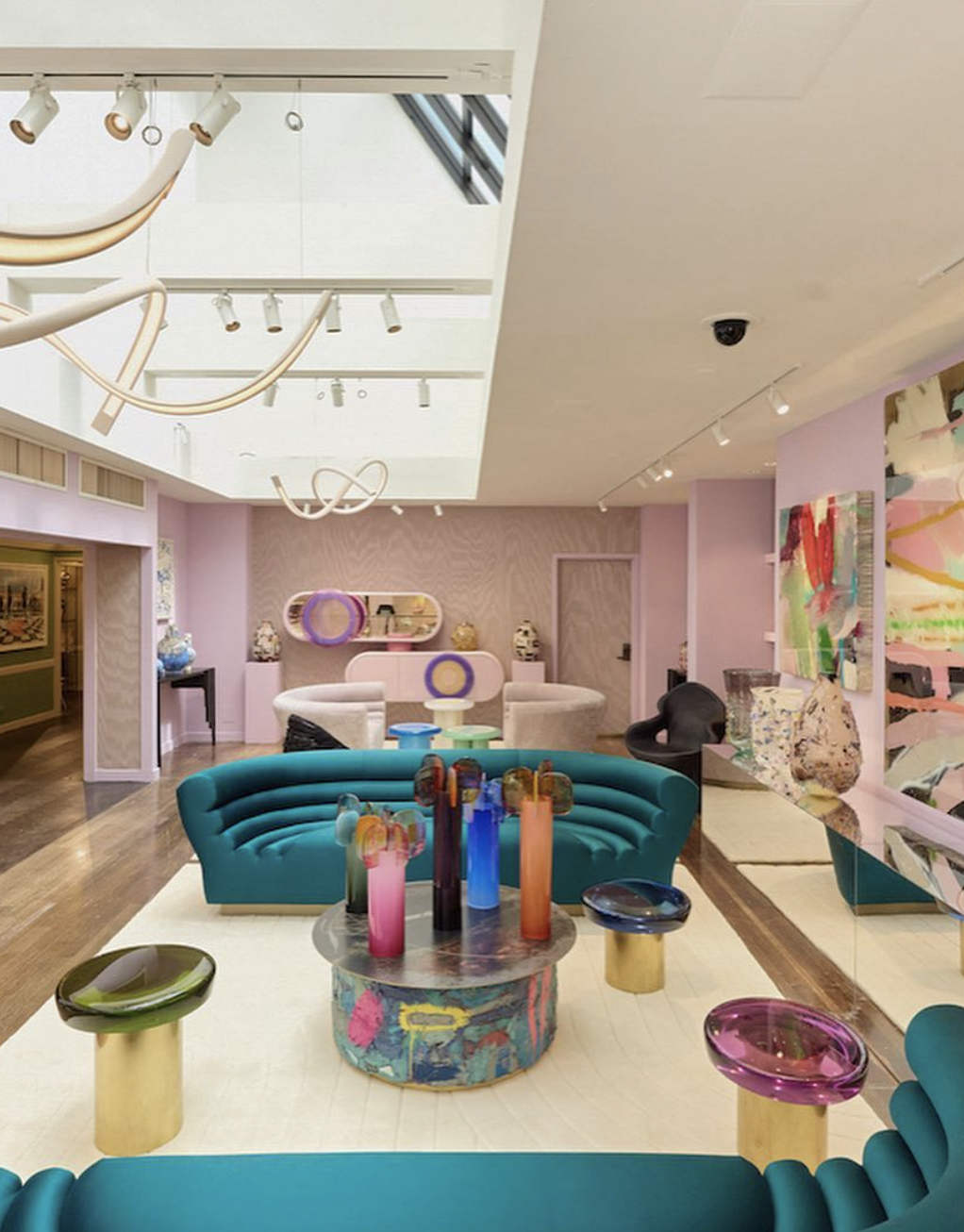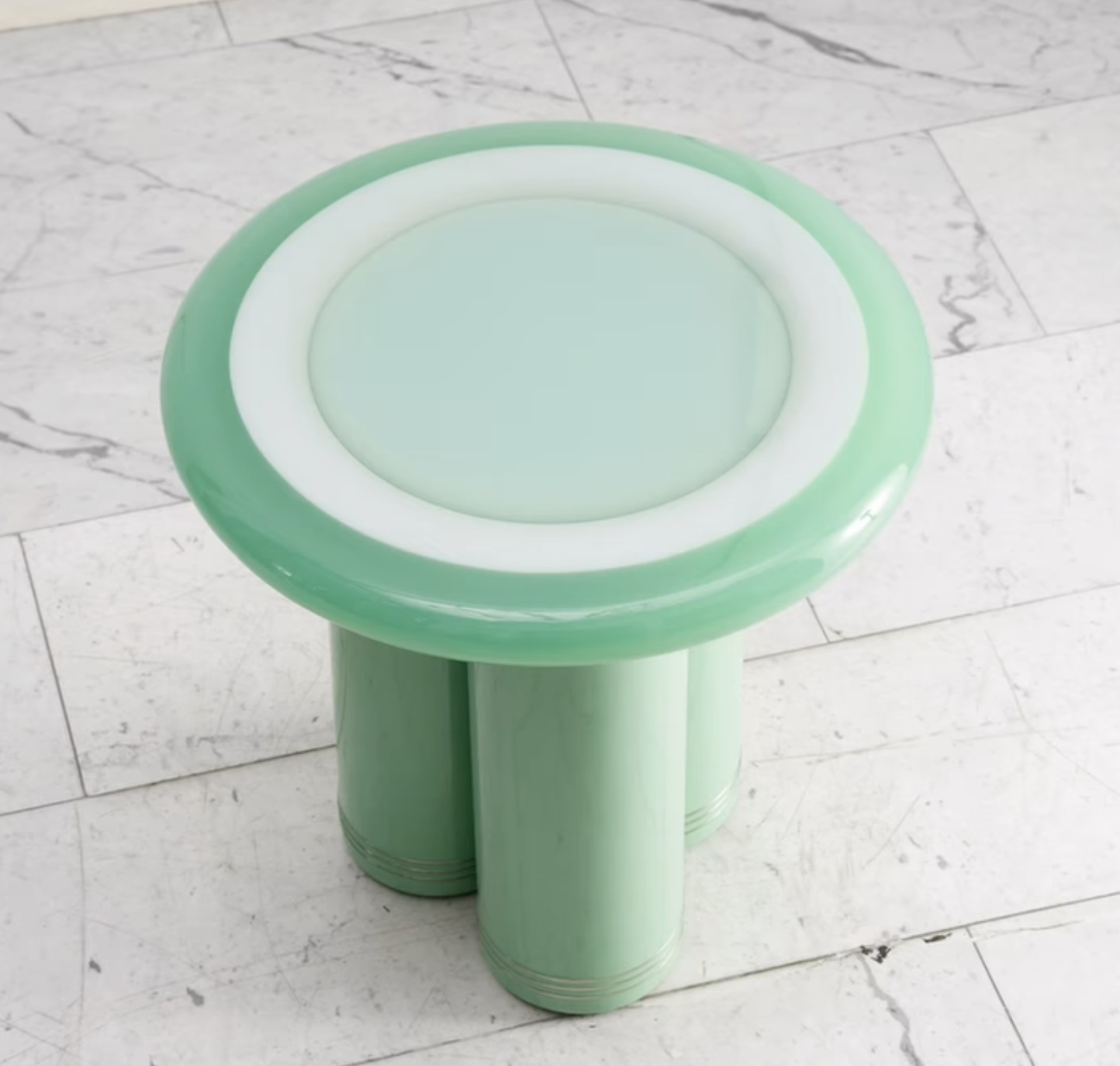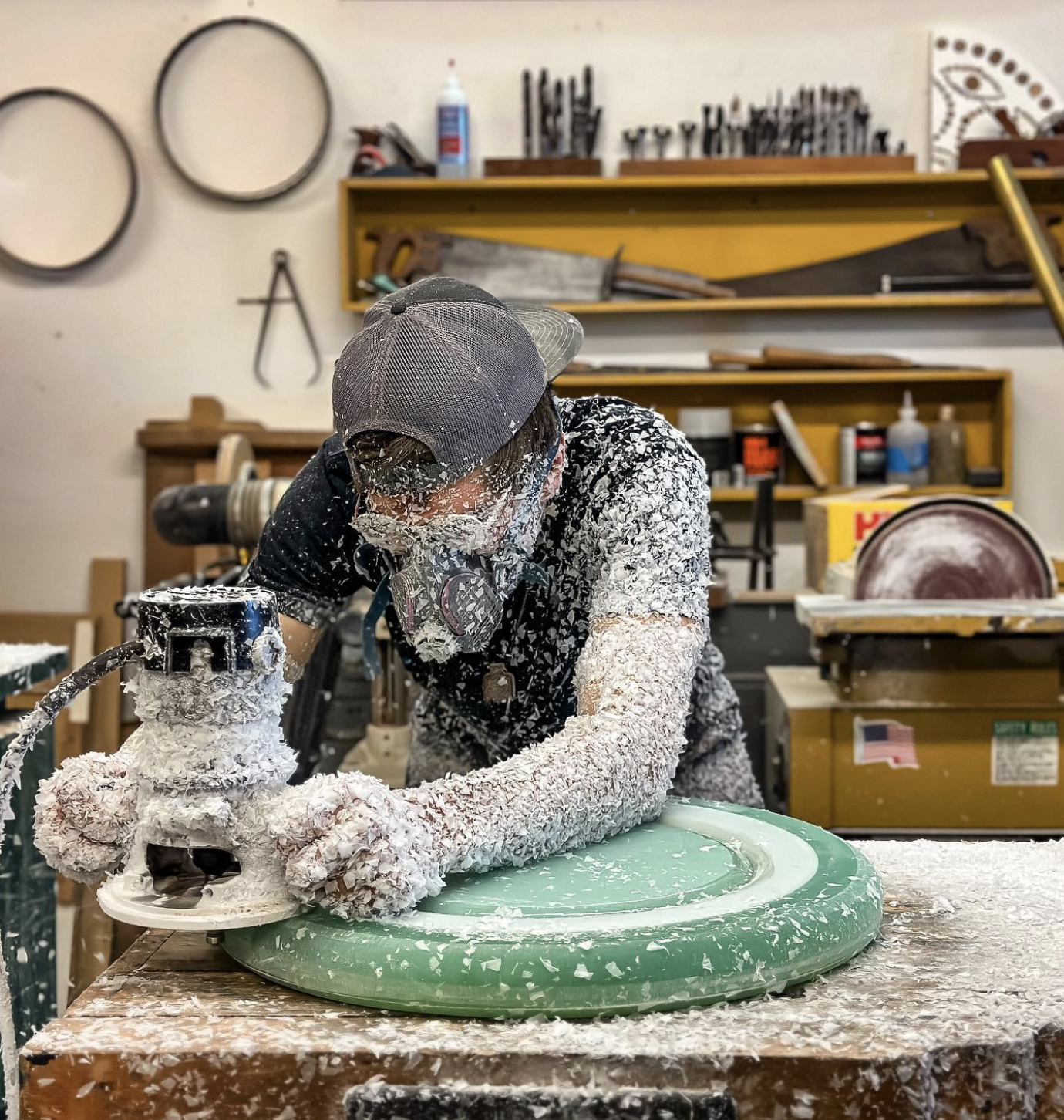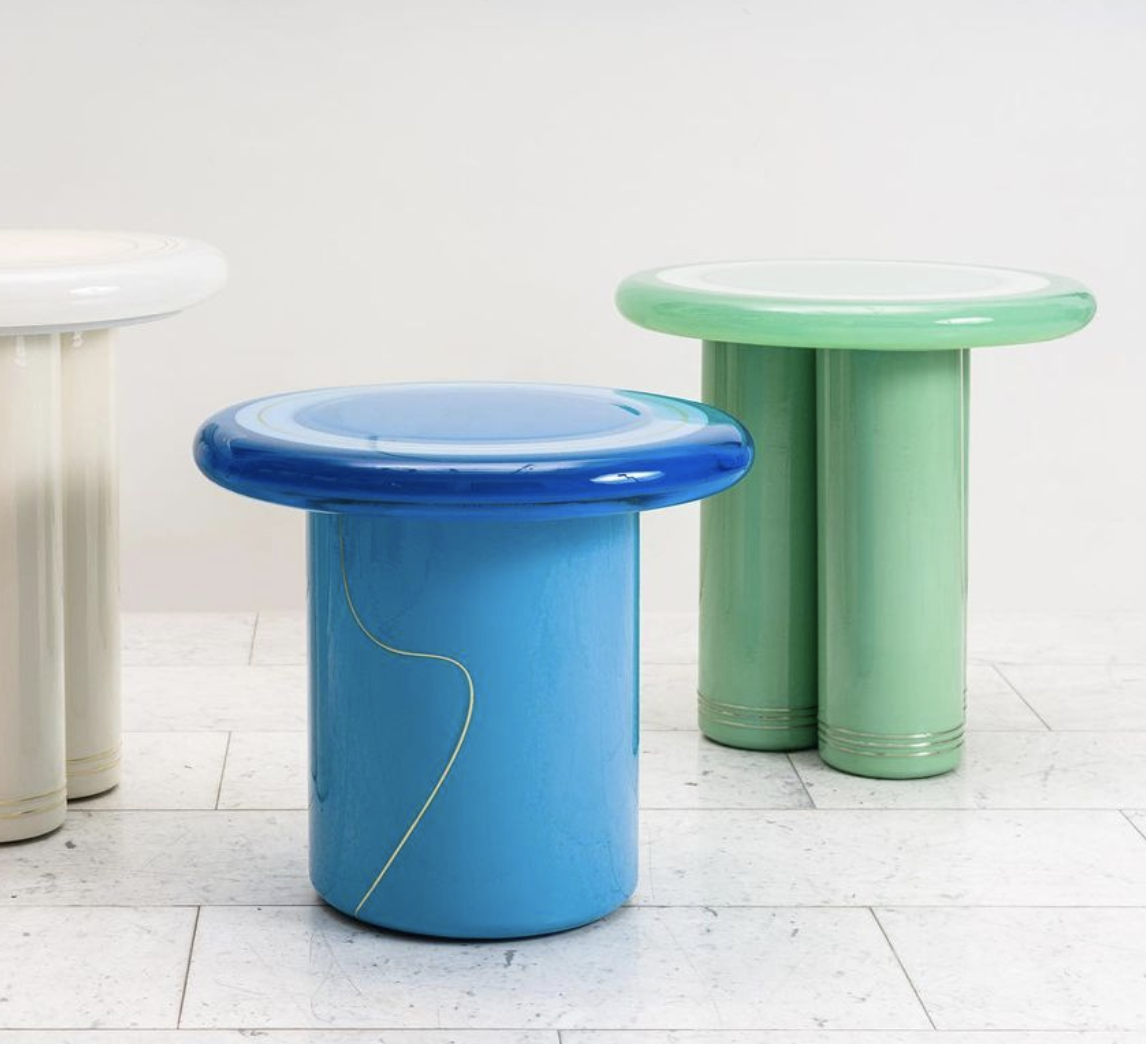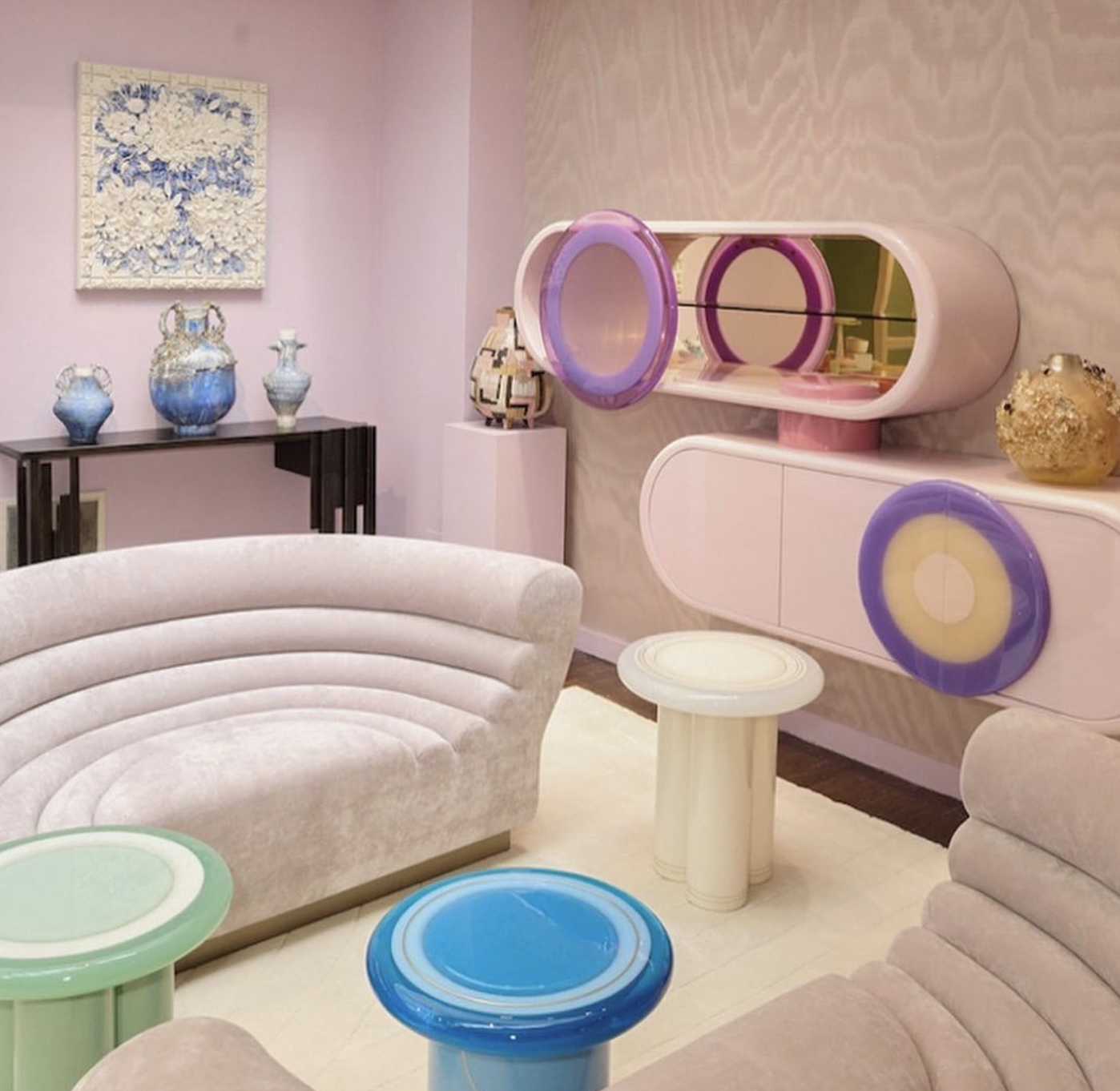WE ARE ONA: The ephemeral gastronomic collective that’s taking over the world
A WhatsApp call with Luca Pronzato, sommelier, restaurateur and founder of We Are Ona, on food, experiences, creativity and entrepreneurship.
The human experience is a tapestry woven with the threads of our senses. Sight, hearing, taste, touch, and smell provide us with windows to the world, allowing us to immerse ourselves in the richness and depth of life. When we consciously engage and stimulate our senses, we awaken a profound connection to our surroundings, heighten our experiences, and cultivate a deeper appreciation for the beauty that envelops us. That’s what We Are Ona strives for when throwing the most delicious and visually stunning dining experiences we’ve ever seen.
It was the fall of 2021 when I first heard of We Are Ona through one of my best friends down in Mexico City. I was looking for new restaurants to go to after almost three years of not visiting my hometown and she immediately introduced me to the collective. It was a beautiful experience, she describes, downtown right behind El Templo Mayor. The dinner she attended took place on the rooftop of Círculo Mexicano, the newest addition to Grupo Habita’s acclaimed chain of luxury hotels. All the ingredients were sourced locally and each course was carefully paired with a specific glass of wine. But beyond the food, what captivated her was the knowledge and service of every single member of the staff; “you spoke to every single waiter and they would all explain in depth the reason behind every single ingredient and wine pairing”, she told me. One week after I arrived home, and when I was about to make the reservation, the collective had already moved to another city, so I promised myself I would eventually make it to one of their popups.
While this awaited night happens (fingers crossed soon) I couldn’t resist but reach out to Luca Pronzato, sommelier, restaurateur and founder off We Are Ona, to learn more about his vision and his community of food creatives. We spoke via whatsapp and immediately connected over creativity and entrepreneurship.
Amor Díaz: Can you walk me through a typical day in your life as a culinary artist?
Luca Pronzato: We create culinary experiences for brands that are mainly in the fashion, design, and architecture industries. I run the studio so my day is never the same. We are doing a lot of events but when it comes to the pop-ups, which are about 10 a year, I do a lot of kitchen scouting. We are building bridges between the hospitality and the event world, we are trying to create a really special atmosphere through the spaces that we choose, the flower arrangements, ceramics, and the food... so my creative team work hand in hand every day. Usually, the brands send us a special idea of what they need and we take it from there to create. We also curate pop-up restaurant experiences that are open to the public. There’s a lot of rendering and space design, we look for talent in the specific cities where we pop up, and there’s a lot of tasting and material sourcing as well.
AD: What are some of the challenges you face on a daily basis, and how do you overcome them?
LP: I would say that we are constantly learning. There is no other company that is doing what we do, so there is not really a route/path or business model to follow, so we are learning as we go. This is beautiful but also very challenging.
AD: What’s been your favorite project?
LP: It's hard to say, I really don't have a favorite one, but lately it's been very nice because we are working more in the US. We recently did the Chanel show between seasons and we did a really cool dinner at WSA to celebrate Art Week in New York around TEFAF, Independent, and Frieze.
We Are Ona, WSA, New York
AD: Curious to know (coming from you) your favorite, restaurants, bars, and coffee shops in France.
LP: I go to a lot of restaurants, I source a lot of talents, so it's hard to choose only one. We created a guide, an app, called “The Chefs Guide” developed in partnership with el agua Evian, that references 3000 restaurants - a free international culinary guide allowing users to access restaurant recommendations sourced by chefs worldwide.
AD: What’s in the pipeline for the rest of the year?
LP: We are doing some more popup restaurants. We are doing Paris, during Paris fashion week, Miami for design week, and finishing in Paris again.
Stop Playing With Your Food! …Or Not
Lina Sun Park on her journey with miniature sculptures, her latest project with partner and photographer, David Brandon Geeting, and her life as a creative in New York.
Lina Sun Park on her journey with miniature sculptures, her latest project with partner and photographer, David Brandon Geeting, and her life as a creative in New York.
Lina Sun Park embodies her artwork by creatively utilizing everyday materials that she considers temporal and precarious. Throughout the approximately two-year pandemic, which confined us to our intimate spaces, she dedicated herself to her art.
In "A Spell Too Far," Lina Sun Park and her partner, photographer David Brandon Geeting, offer a captivating look into their transformative journey during the period of confinement. What some might perceive as mundane daily life in a limited space, the duo turned into a remarkable collection showcasing their collaborative creativity. Geeting's photography captures the essence of their partnership, while Park's exceptional talent shines through as she transforms edible materials and beyond into enchanting designs.
Amor Díaz: Tell me about the beginning of your journey with your sculptures. How did it all start?
Lina Sun Park: I'm a very tactile person and using my hands has always been one of my favorite forms of expression and outlets. As a kid, I was drawn to anything sensory, like play-doh, origami, or assembling arrangements. I very much enjoy working with precarious, ephemeral, temporal materials. I’ve always had a knack for choosing uncooperative and unusual materials, and nostalgia plays a part as well. It was a very natural progression of curiosity of both tactility and visuals that led to me making sculptures. I studied fine art in college, and would often be making these interactive installations that were encouraging part of the sculpture to be activated or continued by the viewer. Now my work feels more like I've already physically activated it, and will capture the sculpture in that state.
AD: How was it working with your partner for A Spell Too Far?
LSP: My partner and photographer, David Brandon Geeting, and I created the work for A Spell Too Far as a way to give ourselves a sense of happiness and sanity during an otherwise rather bleak time. It also fulfilled a sense of synergy we had been yearning for, as we had been wanting to work together for some time and lockdown presented itself as the perfect time to do so. The whole thing was very organic, never in our wildest dreams could we fathom it would turn into a book. We would wake up every morning, and fresh from our dreams, talk about our ideas of what we wanted to make that day. About a year after Dave and I had made the initial group of images together, our friends at Same Paper reached out about wanting to create a book of the images. We didn’t want the book to be solely images made in lockdown, so we created more images, using the initial images as a jumping-off point for the book. Unlike the initial images, these later images had no limits, as we had the ability to shoot in a studio setting, and use things found outside the bubble of our abode. Dave is a quick worker and jumps into things intuitively. I take my time and am quite inclined to focus on little details. It was a synergistic mix of energies to bring to the table, as we were able to push each other out of our comfort zones, and for that, I feel very lucky. Each photo is a conversation between both of our sensibilities and art-making processes, both physically and verbally.
AD: It looks like a lot of your recent projects bloomed during lockdown. How has it been life after the pandemic for you as an artist and for you both as a couple?
LSP: It has been an exercise in finding time to make work without the infinite time bubble of the pandemic. Prioritizing quiet time to recharge me in the busy buzz of life has been something on my mind too. We each have our own projects resuming after the pandemic, and it has been exciting for us to each express ourselves in our truest forms. We have also been approached to work on commercial projects as a duo, and it has been so fun and fascinating to see what comes out in that context. As a couple, it has been lovely, we got married and have been building our lives together even more than before.
AD: Why food art? Do you think that your cultural background had an impact on the type of art you are doing today? How?
LSP: My parents operated Japanese sushi restaurants my whole childhood. I'm Korean American, however, it was very common at the time for Korean immigrants to open up Japanese restaurants as that was a more widely accepted Asian cuisine in the US back then. I would spend much of my time in the restaurant, leafing through these shiny, large paged books or calendars of beautifully plated sushi with elaborate garnishes and unusual color and texture pairings. That really informed my young and current mind in so many ways, especially in terms of the presentation of food and the different forms it can take. Also just seeing so many food items in bulk, lent a sort of industrial nature to them. I'd see all these garnishes being made in the restaurant kitchen and often see the bento boxes going out beautifully garnished and returning later with everything eaten but the garnish, despite it being edible. My sister and I would always help my mom make food as children too, things like making dumplings from scratch. We would fold the dumpling wrappers into funny shapes and laugh at how they emerged looking once cooked. Creating food has been a natural progression from so many elements of my childhood.
AD: Where are you currently based and why?
LSP: I am currently based in New York, and will have been here for a decade this fall!! I first moved to New York in my early 20s to start grad school. New York was where I dreamed of moving as a young child. I grew up in Northern California and always longed to experience the four seasons and be surrounded by older buildings than what was around me. For whatever reasons that have brought me here, I am so happy to have met all the intriguing and inspiring people I have here, and simply cannot imagine myself anywhere else, for now.
AD: What does a regular day look like in your life?
LSP: Every day feels a little bit different, but usually a regular day for me would be to wake up around 10 am, do some stretches or morning pages if I'm really on top of things, and have breakfast with Dave. I like to take a walk around my neighborhood after that and then dive into my tasks for the day. I'll then try to take a walk after my work day is done, before my evening meal. I try to give my cat Sasha showers of pets throughout the day too.
AD: What are your favorite spots in your city? Restaurants, bars, cafes, etc...?
LSP: We tend to eat much more home-cooked meals these days, but if I'm going out to eat, one of my favorite spots is Divya's in the East Village. It's an Ayurvedic restaurant and just has the most nourishing and cozy dishes. I also love Cafe Himalaya, a tiny Tibetan restaurant with the most scrumptious avocado salad and potato momos.
AD: What are you currently working on? Any upcoming projects you can share with us?
LSP: I am currently working on a project with a jewelry company, I really love this company and have worked with them before. This time it is on a bigger project, and I am quite excited! Dave and I are also working on an exciting project together for a shoe company, I can't say much yet, but stay tuned!
AD: What do you enjoy the most about what you do?
LSP: What I enjoy the most about what I do, is being able to make the fantastical ideas and scenes in my head a reality - and then being able to share and connect to others through this very specific and esoteric thing. It truly never gets old.
AD: How's your creative process? Guide us through what it is to create one of your pieces.
LSP: Sometimes the idea pops right into my head, and sometimes it takes a bit of pencil-on-paper sketching to really let an idea blossom into one with potential. However, once the actual physical making of a piece commences, it really can go any which way, as much of my work starts as a loose skeleton, and is then thoroughly realized in the actual making of it.
AD: Who inspires your music/art-wise? Are there any past or current artists you take inspiration from?
LSP: Janine Antoni is a performance artist and sculptor whose work has always been formative to me, especially her chocolate and lard pieces. Another artist is Felix Gonzalez-Torres, a visual artist whose interactive installations never cease to inspire me. They are beautiful and touching both before and after you read any text on his work.
Exploring the Duality Between the Urban and the Wild
Carolin Ruggaber explores the crossroads between the urban man-made environment and pure wildness through her beautiful flower installations.
I first saw Carolin Ruggaber’s work through an Instagram story of a friend of mine. I remember being mesmerized by this surrealist landscape of sand, grass, and purple flower details throughout, beautifully framed by three arched windows. I was immediately drawn by this peaceful visual so I reached out to Carolin to see if she could tell us more about her work and her life as a floral designer.
Grown up in the black forest and now based in Berlin, she is expressing all the influences of a big city combined with her deep love for nature into a unique style of flower arrangements and floral installations. Carolin explores the crossroads between the urban man-made environment and pure wildness.
“Botanical Utopia” recently featured on @designboom and @milan.design.week
Amor Díaz: Can you walk us through a typical day in your life?
Carolin Ruggaber: There is no day like a typical day. Some days I am on set for up to 15 hours, working non-stop. On other days, I spend time in the office conceptualizing and planning the next project with the team. It really depends on the specific project at hand, no day is the same.
Amor Díaz: How do you start your day?
CR: As my mornings are the most productive, I start my days very early, usually before anyone else is up and about. When I get up that I make sure to have some quiet time to myself with a good cup of coffee while not communicating to anyone but my cat. This helps me to mentally prepare for the day ahead and get into a positive and productive mindset.
AD: What does a usual day in the studio look like?
CR: This can be early morning visits at the flower markets, Preparing flowers and plants, supplying them with water, designing on Photoshop or 3D and communicating with clients or my team to make sure we are all on the same page.
AD: What are some of the challenges you face as a floral designer?
CR: One of my biggest challenges is finding a balance between being on production for long hours and keeping up with emails and communication. The practical part with the flowers and being available in the office all day long. During long production days, it can be difficult to stay on top of emails. Luckily I have a reliable team now who helps me to keep things running smoothly, even when I am not available.
AD: Can you share any specific rituals or practices you incorporate into your daily routine to enhance your creativity and inspiration?
CR: Generally speaking my mind is constantly inspired and I find inspiration all around me, whether it be a beautiful structure at the flower market or a walk in nature. Sometimes best ideas occur when I’m bored and I do nothing. There's a constant urge to create and turn my ideas into reality. I don't have any daily rituals or practices but I have found that quiet time is important to recharge. Whenever I can I’m away from my laptop or phone, also I implement small things like walking to the studio if I don’t need the car. It’s a 20 min walk through a small forest from where I live and super beautiful.
AD: How do you stay updated on the latest design trends and innovations in the industry?
CR: I aim for timeless designs that transcend trends. Trends are often short-lived and can quickly become outdated. Also, I think that trends can limit your creativity and can limit you to develop your own style. I love the new interpretation of flowers that some people may consider old-fashioned. When flowers are put in a completely new context, new design possibilities emerge. I believe that keeping an open mind and remaining curious are key to staying relevant and inspired.
AD: Can you give us an insight into the process of conceptualizing and creating a new installation?
CR: To me the most important is always the overall picture. So it always starts with understanding the space in which it will be located. How every single piece can be combined into a compositional entirety. How does it interact with the room? What needs to be expressed? How does it react to the architecture around it? Flowers have the enormous power to change the atmosphere in the room completely - so it’s very important to pay attention to the details. From there I start to digitally visualize the concept - compare structures, find the perfect flower or plant. This will also help the client to get a better understanding and we are all on the same page. The best part of course is the final production when everything comes together. The flowers are usually bought a few days earlier so they are at their best state and in full bloom. This is of course the most beautiful part, I love it when everything comes together, especially for big installations where there was a lot of planning involved and finally, the result comes to life.
Photo courtesy of the artist.
AD: What's been the most challenging project? Any particular one that comes to mind?
CR: I guess that every project comes with its own challenges, which makes it unique and exciting. It is important to approach each project with a fresh perspective and tailored approach since no two projects are ever the same. Sometimes, we have to come up with completely new techniques, that require extensive trial runs in the studio, or it can involve travel and logistical challenges. Especially this year we had quite a few projects overseas. But this is also what keeps it interesting. From the outside, it might look like I’m doing most of the work by myself but in reality, there is an amazing team of professionals supporting me like an engineer and very skilled florists. Without them nothing would be possible.
AD: Can you share any strategies or techniques for future flower designers out there?
CR: Taking time to create and explore new ideas is essential to me, creative time, where I’m just by myself and the flowers. This is why I’m spending a few hours once a week where I can work for a few hours alone in my studio where no one distracts me. Meanwhile, I have to mark it in my weekly calendar to make sure I’m really finding the time, but this is something very important to me as I’m able to find new techniques and also improve my photography skills. I have a very beautiful daylight studio - the light comes in a huge window from above with a 7m high ceiling - so it feels like you are completely cut out from the outside and can really focus.
AD: Curious to know your favorite restaurants, bars, and coffee shops in Berlin.
CR: Tough question, there is many! One of my most favorite is Kink Bar and Frank Café just next to it. I enjoy also good coffee at Coffee circle. What I can also recommend is the coffee place and restaurant at Königliche Gartenakademie in Dahlem, right next to the botanical gardens in a magical atmosphere in the green house.
AD: Your perfect day?
Surrounded by lots of flowers, that’s for sure.
Photo courtesy of the artist.
Unmasking Fake Rothko
Exploring Alexa Agienko’s provocative reflections in contemporary culture.
Exploring Alexa Agienko’s provocative reflections in contemporary culture.
Welcome to the world of an emerging artist. Alexa Agienko, whose passion lies in traditional painting and contemporary art. Born in Slavutych, Ukraine, Alexa’s artistic journey has taken her on a path of photography and media art before returning to her first love, paintings.
In her works, Alexa reimagines the essence of 20th-century contemporary art, infusing it with the modern cultural characteristics that define our society. With a keen focus on the cult of consumption and the pursuit of status, her creations resonate with a deep satirical tone. One of her most notable series titled “Fake Rothko” challenges us to question the role of art in a world dominated by consumerism and the relentless pursuit of social standing. Through her compositions, Alexa provokes contemplation and conversations around the intrinsic value of art and the ever-changing dynamics of our materialistic society.
Currently based between the vibrant cities of Kyiv and London, Alexa draws inspiration from the diverse art scenes surrounding her. The fusion of cultures and artistic influences seep into her creations, giving them a unique flavor that captivates. As Alexa embarks on this exciting journey, she eagerly looks forward to sharing he artistic evolution with us.
Photo: Courtesy of @alexa_agienko.
Karen Santos: How has being raised in Slavutych, Ukraine, and living in London shaped the way you relate to art?
Alexa Agienko: I was born and raised in Slavutych, a small town in northern Ukraine founded in 1986 after the Chornobyl disaster. The majority of the adult population in our town worked at the power plant. Since our city was very young, it had a lot of different activities and creative places for children, such as art schools, theaters, sports clubs, and more, which occupied almost all of our free time as kids, including mine. At that time, I already loved drawing, but it was just a childhood hobby because most of my free time was occupied by gymnastics. When I was four years old, my parents enrolled me in a gymnastics club, where I spent twelve years and became a master of sports. It greatly influenced me in terms of discipline and achieving set goals, and I am very grateful for that experience and development in my Slavutych. However, I still believe that it is not the city that shapes a person but the impressions they received in childhood.
My introduction to London happened approximately ten years ago as part of language courses, and honestly, London didn't impress me at all at that time. By that point, I had visited many cities and metropolises, and London was not on my list of top cities where I would want to live and work. But after ten years, fate brought me back to the capital of the United Kingdom, and I fell in love with this city. I think it was during this interval that I delved into art, creativity, exhibitions, and other art events that fill London. This rhythm, vibe, and art infrastructure cannot help but inspire you if you are open to new stages in your creative career.
KS: Tell us more about the routine or daily practices that help you boost your creativity and be inspired.
AA: I believe the second most significant expression of my creativity is my camera, which is always with me in my bag or my hands. I love walking around the city and noticing the beauty that surrounds me – people, nature, architecture. I enjoy photographing elderly couples, and children; it's how I relax and simultaneously get inspired for productive weekdays in my studio. Besides the camera, I have another love, my Harley-Davidson. This companion always improves my mood and helps me feel alive. And, of course, music. It's hard to imagine all of this without the right track matching my mood in my headphones.
KS: What does rebellion mean to you as an artist? Would you call yourself a rebel?
AA: Rebellion as an end in itself has never been my goal. I simply do what I love, what is relevant at the moment, as it seems to me. Perhaps the abstract artists of the 20th century could say the same about themselves. Maybe there are some rebellious traits in me, but most likely not. I cannot label myself as such. At the very least, some time must pass, and we will see what it has influenced and grown into. For now, these labels sound too loud, in my opinion.
KS: Being a professional artist also involves receiving criticism, which can be as constructive as it can be negative. How have you dealt with this aspect?
AA: I believe that in the modern world, there is no longer a concept of a professional artist. The boundaries have become very blurred, and it is challenging to assess the level of professionalism unless you are Jerry Saltz. Criticism has become an integral part of my art, and I like it. My works evoke emotions in viewers, which means it is no longer dull art. Negative criticism has never elicited a negative response from me because I create my work consciously, knowing what and why I am doing it. If a viewer wants to express their accumulated negativity by commenting on my work, they are welcome to do so. Everyone has the right to do what they deem necessary; that is freedom. I also occasionally receive constructive criticism, but usually, it comes from people close to me, for which I am always grateful.
Video: Courtesy of @alexa_agienko.
KS: The use of color is an element that strongly characterizes your work. Which palette represents your personality?
AA: I consider myself a highly emotional person, so there is no constant palette for me. I am different every day. Yesterday, I could be all shades of green, and today I want to be dusty pink. It's fun! And, of course, my work begins with my mood. It influences my choice in the Mark Rothko catalog, and it also affects the technique of execution, which can vary because I am not trying to create an exact reproduction but merely a resemblance.
KS: What can you tell us about the quotes that we find in your paintings?
AA: The text on my paintings is exactly what gives them new meanings and provides topics for discussion. More often than not, it is irony/post-irony that reflects or satirizes the current reality. Each such text also has its mood, which should correspond to the palette of the painting to maximize the viewer's attention.
Photos: Courtesy of @alexa_agienko.
KS: Why Rothko?
AA: I have always enjoyed abstract art, especially the mid-20th century movement with artists like De Kooning, Pollock, Mitchell, Frankenthaler, Kline, Twombly, and of course, Rothko. I believe Rothko is the most adaptable for the ideas/thoughts I want to convey.
I am often asked if there will be, for example, a series called "Fake Clyfford Still." It's difficult for me to answer that right now, perhaps... Currently, I still have a large collection of Rothko's works.
KS: Rothko believed that ego, or allusions to the artist’s biography and role in society, only distracted from art’s true power to provoke “pure human reactions.” What do you think about this statement?
AA: I can agree with that. If we go back to criticism, specifically negative comments, often my appearance or image becomes part of the discussion. This is the very distraction from the essence of the painting, the message it carries. On the other hand, a modern artist cannot exist without an image, an open biography, etc. Therefore, it is an integral part of the viewer who looks at the artwork in conjunction with the artist's persona.
Photos: Courtesy of @alexa_agienko.
KS: How can we see your lifestyle portrayed through your work?
AA: Perhaps courage and confidence in what I do in my life are somehow noticeable in my work. It's hard to say; I think it's better to leave that judgment to the viewer.
KS: What does “the art of living” truly mean to you?
AA: To trust me and my emotions. To create. To notice the beauty around me. To fill my life with joy, even when it's challenging.
A Day in the Life of Djivan
Djivan Schapira takes us to his creative studio and shares everything about his upcoming projects and his life as a French furniture designer in New Jersey.
Djivan Schapira is a furniture designer born in Paris and currently living and working in New Jersey. He is represented by acclaimed gallery, Todd Merrill Studio, through which he is showcasing his latest series of candy-like furniture pieces at Bergdorf Goodman.
We spoke with Djivan about his background, his projects, his life in New Jersey and we even got the chance to virtually tour his studio.
Amor Díaz: Your father played an important role in your development as a furniture designer. Can you tell us about his background and influence on your work?
Djivan Schapira: My dad is a craftsman, so my creative journey began as his apprentice through my 20s. He has a very specific style, which I learned a lot from. And then kind of took it and modified it a bit. I gave it a new angle of this interesting intersection between very high-end design, but also functional pieces of furniture. I think that one of the main things to take away from his work is not necessarily the style, but more the working methods and attention to detail, the quality control and all those things he's taught me and that I've taken forward into the work that I'm doing now.
AD: Tell us about your recent display at Bergdorf!
DS: I signed with a very reputable blue chip gallery called Todd Merrill Studio. I think I’m by far, one of their youngest, newest artists. And so last week, Todd Merrill Studios opened a pop-up exhibition in Bergdorf Goodman. And some of my newest work, five pieces are there, including one of the largest pieces that I've done, are going to be displayed through the month of August.
The exhibition is on the seventh floor, so that's exciting and who knows what can come from that.
AD: What does a typical day look like?
DS: It’s pretty consistent, you know? So like, I don't operate on a traditional like nine to five, five days a week kind of schedule. I'm in the studio pretty much 85% of the time. What's nice about that is that I live very, very close so it’s convenient. I'm pretty much always in here, whether I'm working or drawing or coming up with ideas, there's just constant work to be done. Some people sometimes have a little difficulty being able to differentiate between work and life, but in my case, they’re kind of the same. When you're trying to push yourself as an artist, then you kind of have to give it 150% all the time. That's kinda the way that I see it. So you know, sometimes the days get lost, you don't know what day of the week it is, even on the weekends you end up working, but it never feels like a chore. Especially given the fact that projects come and go, there's always movement happening in the studio, so whatever project is currently being worked on, that kind of feels like the present. Then hopefully, that takes a couple of weeks to accomplish and then something new comes in so it's almost like a reset button, so I never feel stuck.
AD: Do you collaborate with more people in the studio? Or is it just you in that space?
DS: In terms of production, it's me most of the time when I'm very busy, which is the case. I sometimes bring my father from France to help me with some stuff. So that's been great because we've been able to get back to working together like we used to when I was younger. And then I also have a business partner, Andrew, who does more of the kind of business development stuff he brings in new business and handles all the administrative things.
AD: So your family lives in France?
DS: Yeah, my whole family lives in France. They all moved back many years ago. Even though I don't sound like I'm very French anymore, I still speak fluent French. When I first started the business, it was to allow me to sponsor myself with a work visa, and now I’m in the process of applying for a green card which is pretty difficult and which means that I'm gonna be, stuck in the United States for quite some time, so my family will come to visit whenever they can and once I'm allowed to travel again, I'll be going back to France.
AD: Why New Jersey?
DS: I've always been pretty much in this area. When I first immigrated, when I was six, we moved to Hoboken, and so I lived in Hoboken through high school, then I moved to Harlem and then lived in Brooklyn for many years while I was in college. I studied architecture at Parsons School of Design. And then when I started my business, that's about, uh, six years ago now is when I moved back over here and found a spot on the same block as the studio so that I could be here as much as possible. One of the main things is being able to be as efficient as possible because once there's a lot of commute it’s easy to get lazy.
AD: What are your favorite spots in the area?
DS: I don't frequent that many places around here, to be honest. In terms of food and stuff, I buy groceries and I cook for myself, so I don't go out in Jersey that often. I mean, when I go out I spend most of my time in Manhattan or Brooklyn. That's where all my friends live so in the West Village or Williamsburg or Bushwick.
AD: One of my favorite pieces that I saw online was this lamp that you did with an exposed bulb. Can you tell me more about that piece in particular?
DS: Right, right. This one.
AD: That one, that one! I am obsessed. I feel like you always think of a lamp and you kind of feel drawn to protect the bulb. Right? But in this case, you are doing the opposite.
DS: Right, exactly. Yeah. So if you look at the lamp, there are those things that look like flowers and so it's from a collection called “LES FLEURS" which means “THE FLOWERS” in French. It was a collection that was born through the pandemic. It was the first time I made other things besides smaller tables. And during the pandemic, obviously, everything came to a halt, so I had some time to think. I changed my approach and created this very large dining table and some other pieces including this lamp. It was kind of a research to see what else I could create with the techniques that I already knew.
Last year in late February, early March, I had my debut solo show at High Line Nine. That's actually how I ended up meeting Todd; through that opening, I was also able to apply and won two awards last year. So through “Les Fleurs” collection a lot of things were born, which is funny because it’s kind of metaphoric there.


